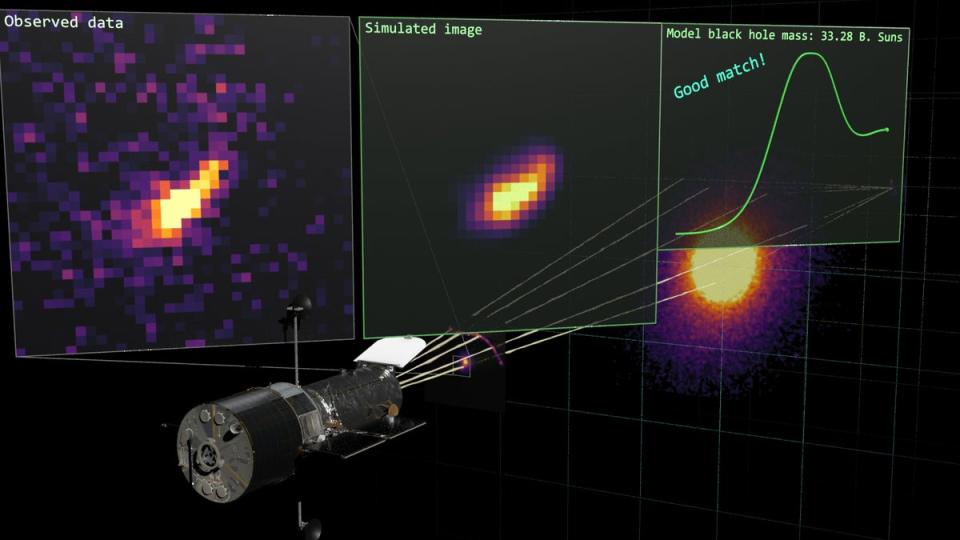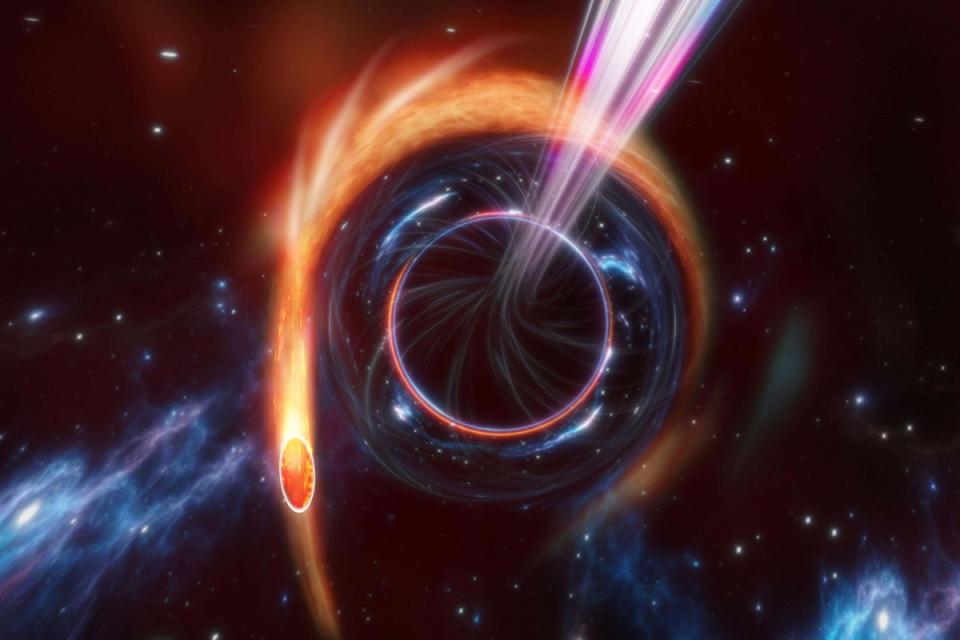What is a black hole and can it affect Earth?

The largest known black hole in the Milky Way, excluding the supermassive black hole residing at the centre of our galaxy, has been found by London astronomers. Its mass is around 33 times that of the sun.
Researchers said on Tuesday that the recently discovered black hole has a companion star orbiting it and is situated in the constellation Aquila at a distance of roughly 2,000 light-years from Earth, or rather near in cosmic terms.
Pasquale Panuzzo, a research engineer at the French research agency CNRS working at the Observatoire de Paris, said: "This black hole is not only very massive, it is also very peculiar in many aspects. It is really something we never expected to see."
The distance that light travels in a year is 5.9 trillion miles (9.5 trillion kilometres), or one light year.
Black holes are incredibly dense objects that are difficult to detect because of their extremely intense gravity, which prevents even light from escaping. Because it created a wobbling motion in its partner star, this one was found through observations undertaken in the framework of the European Space Agency's Gaia mission, which is constructing a massive stellar census. The mass of the black hole was confirmed using data from various ground-based observatories and the Very Large Telescope of the European Southern Observatory, located in Chile.
The findings have been published in the journal Astronomy & Astrophysics.
But what is a black hole and why are scientists so interested in them? Here, The Standard takes a look.

What is a black hole and how are they formed?
Black holes are regions where matter has been crushed by gravity to an infinitely small space where the normal laws of physics no longer apply.
They are phenomenally dense and have gravitational fields so powerful no matter or light can escape, making them extraordinarily difficult to observe despite their great mass.
While nothing can escape the gravitational vortex of a black hole, gas and radiation rage in a swirling eddy around the brink of the abyss.
It is this point-of-no-return precipice, called the event horizon, that astronomers have tried to observe for the first time, which is difficult, as light is swallowed.
An event horizon is the boundary when any matter — stars, planets, gas, dust, and all forms of electromagnetic radiation, including light — is swallowed into oblivion.
They come in different sizes and are formed when very massive stars collapse at the end of their life cycle. Supermassive black holes are the largest kind, growing in mass as they devour matter and radiation, and sometimes merging with other black holes.

Why are scientists so interested in them?
The project may help scientists struggling to marry together two apparently incompatible pillars of physics; Einstein's theory of general relativity and quantum mechanics.
The first relates to laws of nature on cosmic scales, while the second governs the weird world of subatomic particles where it is possible to be in two places at once.
Einstein's theory of general relativity allows for a prediction of the size and shape of a black hole. If the prediction turns out to be off the mark, the theory may need rethinking.
Physicist and black hole expert Lia Medeiros, from the University of Arizona, US, told ScienceNews magazine: “If general relativity buckles at a black hole's boundary, it may point the way forward for theorists.”
Researchers have been studying black holes through the Event Horizon Telescope (EHT), a global network of synchronised radio observatories.
The EHT's other target, the galaxy Messier 87, also known as M87, is notable for shooting out a fast jet of charged subatomic particles that stretches for some 5,000 light years.
The new observations are expected to provide clues about M87's magnetic field, which may be linked to the jet mechanism.
The fact that black holes do not allow light to escape makes viewing them difficult. The scientists will be looking for a ring of light - disrupted matter and radiation circling at tremendous speed at the edge of the event horizon - around a region of darkness representing the actual black hole. This is known as the black hole's shadow or silhouette.
The scientists said the shape of the shadow would be almost a perfect circle in Einstein's theory of general relativity and, if it turns out that it is not, there is something wrong with the theory.
What black holes have scientists been studying?
The project targeted two supermassive black holes residing at the centre of different galaxies.
One of the black holes — Sagittarius A* (SgrA) — is situated at the centre of our own Milky Way galaxy, possessing four million times the mass of our sun and located 26,000 light years from Earth. A light year is the distance light travels in a year, 5.9 trillion miles (9.5 trillion km).
Images of SgrA are likely to show a lopsided ring of brightness due to gravity bending light closer to the black hole more strongly than light further away.
The second target is the M87, which inhabits the centre of the neighboring Virgo A cluster, and boasts a mass 3.5 billion times that of the Sun, located 54 million light-years away from Earth. Streaming away from M87 at nearly the speed of light is a humongous jet of subatomic particles.
Will a black hole swallow Earth?
Science writer Ben Skuse says the chance of a black hole destroying Earth is very unlikely.
“This is because, at a distance, their gravitational pull is no more compelling than a star of the same mass,” he told the BBC’s Sky At Night magazine.
“If we were to replace the Sun with a black hole of the same mass, for example, Earth and the rest of the planets would continue orbiting in exactly the same way, because there would be no discernible change in the gravity acting on them.”
What is inside a black hole?
According to Einstein’s theory of general relativity, within a black hole there’s something called a singularity. A singularity is what all the matter in a black hole gets crushed into. It’s sometimes referred to as a point of infinite density at the centre of the black hole.

 Yahoo Movies
Yahoo Movies 